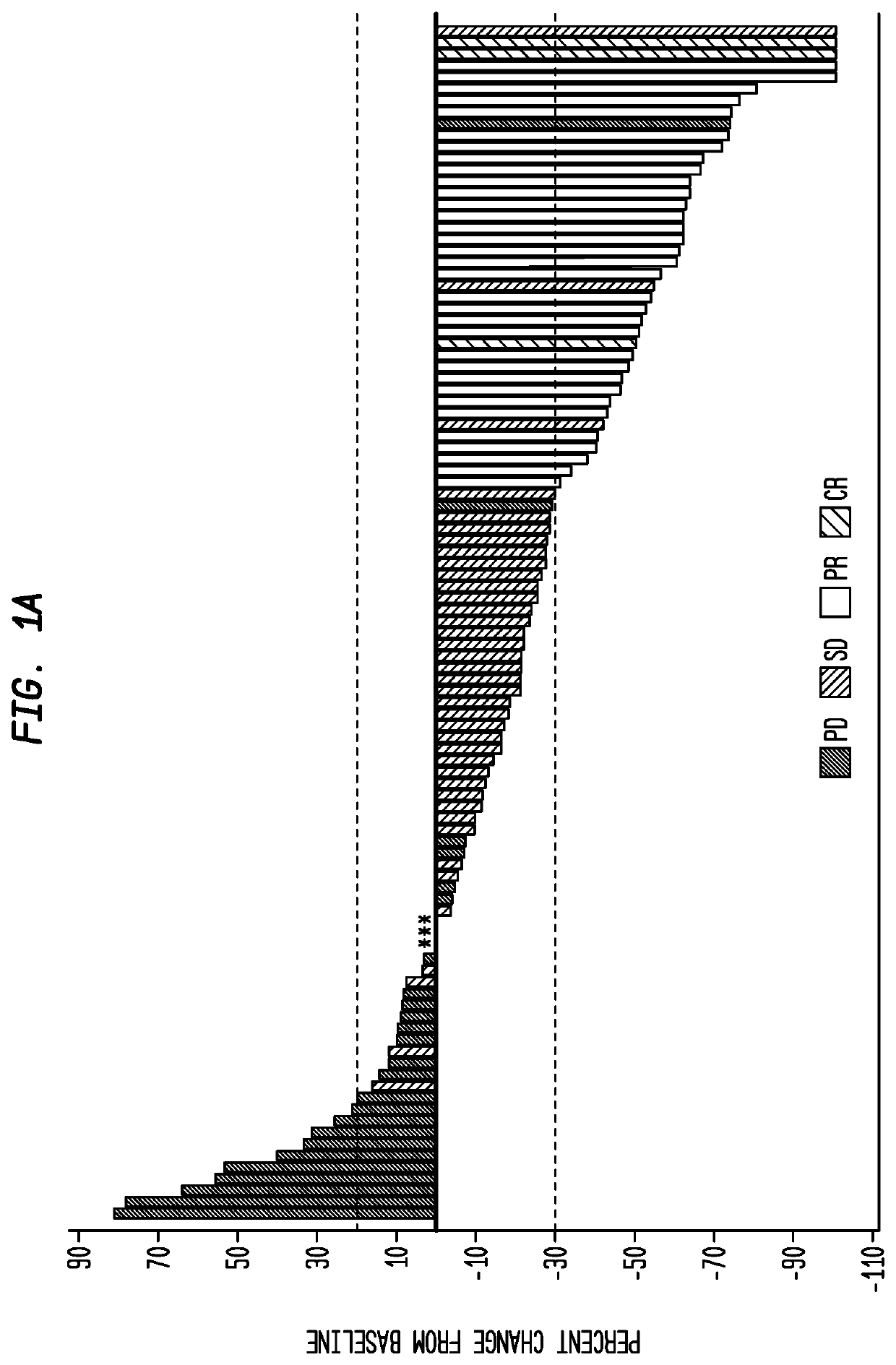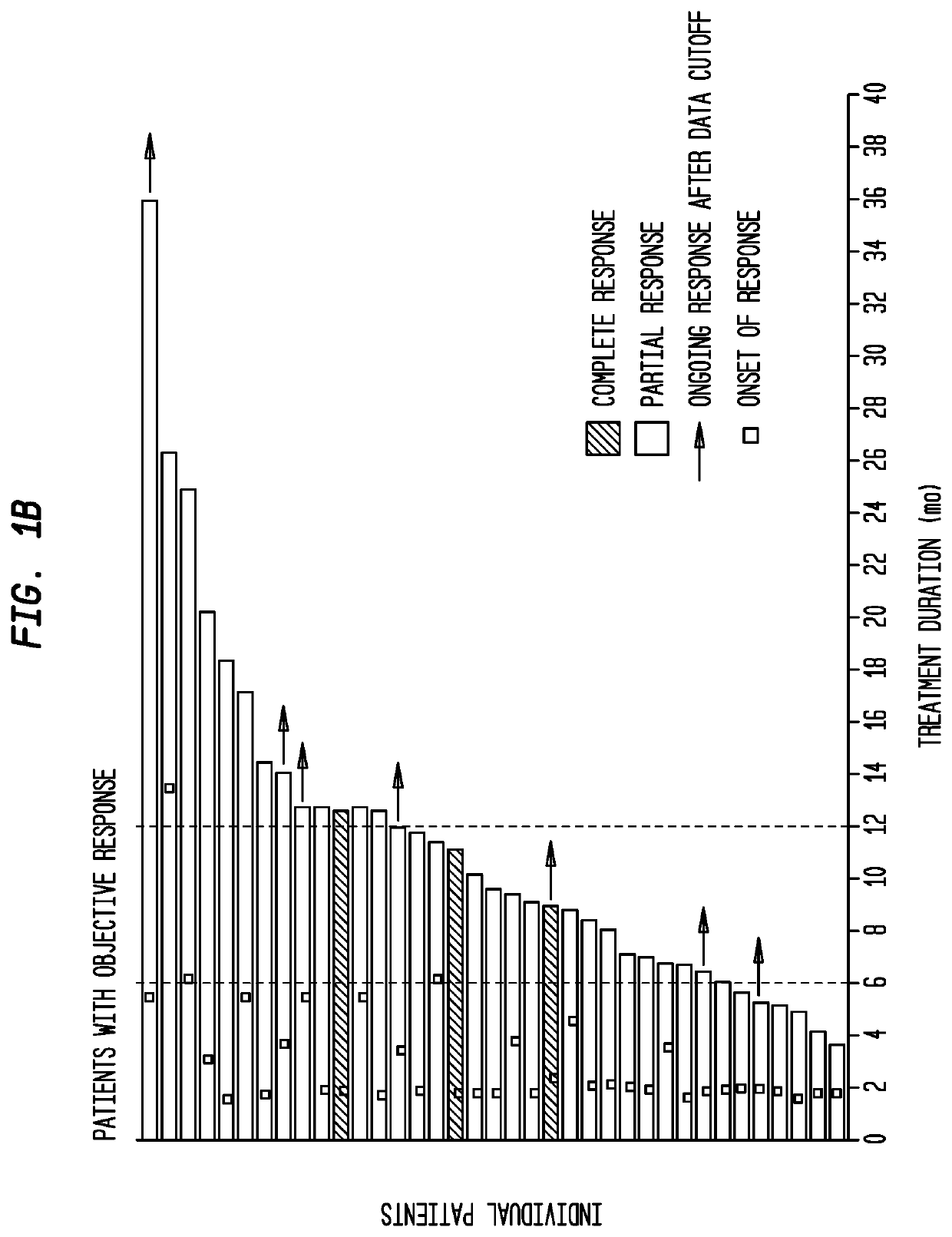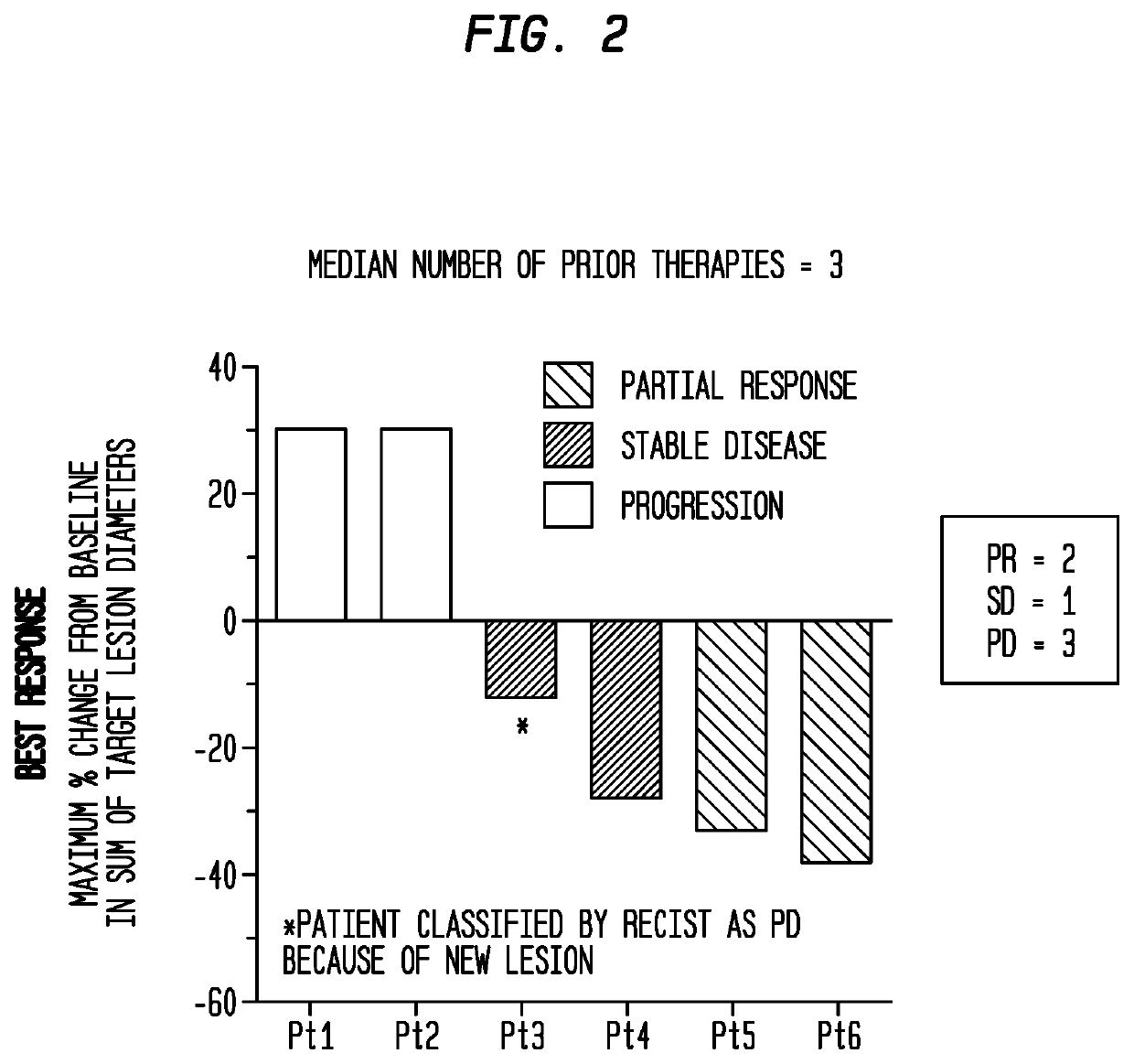Biomarkers for antibody-drug conjugate monotherapy or combination therapy
a technology of antibody-drug conjugate and biomarkers, which is applied in the field of biomarkers for antibody-drug conjugate monotherapy or combination therapy, can solve the problems of substantial percentage of patients still not responding or developing, and achieve the effects of reducing toxicity, superior efficacy, and unexpected superiority
- Summary
- Abstract
- Description
- Claims
- Application Information
AI Technical Summary
Benefits of technology
Problems solved by technology
Method used
Image
Examples
example 1
Treatment of Metastatic Triple-Negative Breast Cancer With the Anti-Trop-2 ADC Sacituzumab Govitecan
[0201]Triple-negative breast cancer (TNBC) is characterized by the absence of the estrogen receptor, progesterone receptor and HER2 expression. TNBC accounts for approximately 20% of breast cancers and shows a more aggressive clinical course and higher risk of recurrence and death. Because of the absence of hormone receptor targets, there is a lack of appropriate targeted therapies for TNBC (Jin et al., 2017, Cancer Biol Ther 18:369-78), although atezolizumab in combination with abraxane chemotherapy has recently been approved for first line therapy of TNBC. To date, the main systemic treatment for TNBC has been platinum-based chemotherapy, primarily with cisplatin and carboplatin (Jin et al., 2017, Cancer Biol Ther 18:369-78). However, resistance to or relapse from these agents is common. Over 75% of BRCA1 / 2 mutated breast cancers show the TNBC phenotype, and homologous recombination...
example 2
Clinical Trial of Sacituzumab Govitecan (IMMU-132) for Metastatic Urothelial Cancer
[0211]Patients with metastatic, platinum-resistant urothelial carcinoma (PRUC) have no FDA-approved therapies (Faltas et al., 2016, Clin Genitourin Cancer 14:e75-9). The response rates to second-line chemotherapy have generally been <20%, with a median overall survival of <1 year (Faltas et al., 2016, Clin Genitourin Cancer 14:e75-9). The present Example reports a study with 6 heavily pretreated patients with advanced PRUC (ClinicalTrials identifier NCT01631552), treated with the novel ADC sacituzumab govitecan (IMMU-132).
[0212]Trop-2 is widely expressed in ≤83% of urothelial carcinomas (Faltas et al., 2016, Clin Genitourin Cancer 14:e75-9). Of the 6 patients, 3 had a clinically significant response (progression-free survival, 6.7 to 8.2 months; overall survival, 7.5+ to 11.4+ months). Sacituzumab govitecan was well tolerated. Because of these results, a phase II trial has been initiated. The present ...
example 3
Further Studies on Sacituzumab Govitecan in Metastatic Urothelial Cancer
[0226]Following Example 2, further studies were performed in patients with mUC pre-treated with platinum-containing chemotherapy. Such patients have limited therapeutic options, with checkpoint-inhibitor immunotherapy (IO) responses in a minority of patients. We provide further evidence of the safety and activity of sacituzumab govitecan (IMMU-132) as therapy for chemotherapy-pretreated mUC pts (ClinicalTrials.gov, NCT01631552).
[0227]Method
[0228]We enrolled 32 pts with mUC and ECOG PS 0-1 who failed ≥1 prior standard therapy (median=3; range, 1-5). Sacituzumab govitecan was administered at 8 or 10 mg / kg on days 1 and 8 every 21 days, continued until disease progression (PD) or unacceptable toxicity. Response-evaluable pts received ≥2 doses, and had ≥1 post-baseline response assessment.
[0229]Results
[0230]Twenty-five pts [median age 68 yrs (range: 50-91), 24 males] were assessable for safety and response; 23 had p...
PUM
| Property | Measurement | Unit |
|---|---|---|
| tumor shrinkage | aaaaa | aaaaa |
| shrinkage | aaaaa | aaaaa |
| shrinkage | aaaaa | aaaaa |
Abstract
Description
Claims
Application Information
 Login to View More
Login to View More - R&D
- Intellectual Property
- Life Sciences
- Materials
- Tech Scout
- Unparalleled Data Quality
- Higher Quality Content
- 60% Fewer Hallucinations
Browse by: Latest US Patents, China's latest patents, Technical Efficacy Thesaurus, Application Domain, Technology Topic, Popular Technical Reports.
© 2025 PatSnap. All rights reserved.Legal|Privacy policy|Modern Slavery Act Transparency Statement|Sitemap|About US| Contact US: help@patsnap.com



